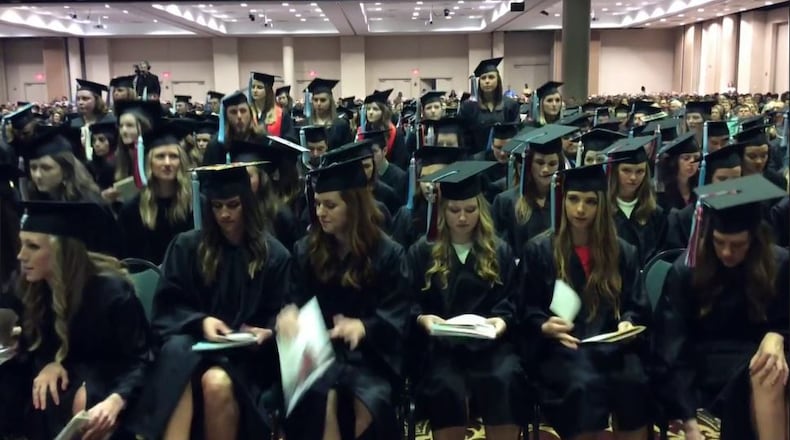On International Women’s Day, I’d like to ask women in k-12 education a question: Why, when you make up the vast majority of the profession, are so few of you in the top leadership roles?
Men, while scarce and growing scarcer in the classroom, rise disproportionately to the higher-paying roles of principal and superintendent.
(Men also win a lot of Teacher of the Year awards here and around the country. My theory: In a field of 10 distinguished and deserving finalists, the typical lone male teacher stands out and thus claims an edge in memorability in the minds of judges.)
A recent research report from the University of Pennsylvania finds women represent more than three-quarters of the public school teaching workforce.
Yet, surprisingly to me, close to half of all principals are men. In high school, two thirds of principals are men.
More than 75 percent of district superintendents nationwide are men, something confirmed with a quick glance in metro Atlanta. Men lead Gwinnett, Clayton, DeKalb, Cobb, Cherokee, Decatur, Forsyth, Douglas and Marietta. Atlanta is led by a woman, Meria Carstarphen, and the interim who recently replaced Fulton's Jeff Rose is former Fulton superintendent Cindy Loe, who led the district from 2008 to 2011.
The Penn study, led by Richard Ingersoll, examined how the teacher workforce has changed between 1987 to 2016 and provided a quick list of descriptors of those changes, some of which – numbers 2, 3, and 7 -- don’t bode well for the profession:
- Larger
- Grayer
- Greener
- More Female
- More Diverse, by Race-Ethnicity
- Consistent in Academic Ability
- Unstable
You can look at the research's explanations for those changes here, but, for today, I want to focus on the growing gender imbalance.
(I will share that much of the growth has been in teachers in high-poverty schools, teachers whose main field was bilingual/English-as-a-second language and special-ed teachers, likely owing to federal requirements. The increase in special education teachers accounts for about 14 percent of the increase in the public school teaching force.)
The Penn study says many traditionally male fields have opened to women, yet that hasn’t seemed to impact teacher ranks:
For instance, data from the Bureau of Labor Statistics (2018) show that in 1972, only 10 percent of physicians, 4 percent of lawyers, 4 percent of architects, and 13 percent of pharmacists were female; by 2018, these proportions had risen to 40 percent (physicians), 37 percent (lawyers), 29 percent (architects), and 58 percent (pharmacists). With career and employment alternatives increasingly available, one might think that fewer women would enter occupations and professions that traditionally have been predominantly female. This has not happened for teaching. Both the number of women entering teaching and the proportion of teachers who are female have gone up.
It is unclear why this has happened. The change in the male-to-female ratio in teaching is not due to a decline in males entering the occupation. The number of male teachers employed in public schools has also grown, by 31 percent, which is also faster than the rate of increase of the student population. But the number of females in teaching has increased at over twice that rate.
The study states:
If the trend continues, we may see a day when 8 of 10 teachers in the nation will be female. An increasing percentage of elementary schools will have no male teachers. An increasing number of students may encounter few, if any, male teachers during their time in either elementary or secondary school. Given the importance of teachers as role models, and even as surrogate parents for some students, certainly some will see this trend as a problem and a policy concern.
The study does document an increase in female principals:
And there have been even sharper increases in the proportion of female public school principals, over half of whom were female by 2015-16, up from 31 percent in 1987-88…Historians (e.g., Strober & Tyack, 1980; Tyack, 1974) have long held that when the public school system was created at the end of the 19th century, teaching was designed as a predominantly female occupation, while educational administration was designed to be men's work. Moreover, an increasing proportion of women in teaching may have implications for the stature and status of teaching as an occupation. Traditionally, women's work has been held in lower esteem and has paid less than male-dominated work. If the feminization of teaching continues, what will it mean for the way this line of work is valued and rewarded?
Your thoughts?
About the Author


